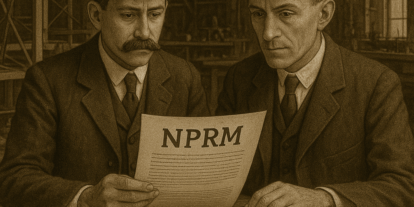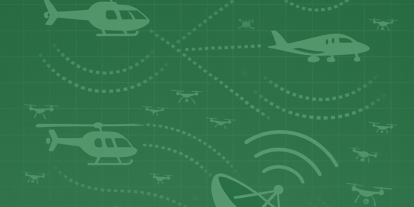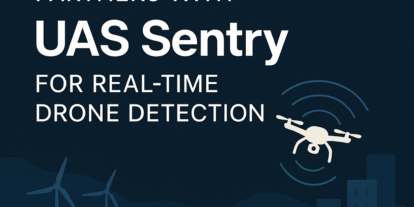Airspace authorizations enable compliant, recurrent operations in controlled airspace for scaling UAS programs
Since the launch of LAANC for recreational users one year ago, users of all UAS have been utilizing LAANC to operate in controlled airspace surrounding nearly 600 LAANC-enabled US airports. While LAANC is a highly effective tool in providing greater visibility and accessibility to controlled airspace for UAS operations, not every airport is LAANC enabled. Which poses the question of how can scaling UAS programs gain access to fly at critical locations while maintaining compliance with the FAA? The answer is small/medium businesses to large enterprises operating under Part 107 will need to apply for an airspace authorization using the FAA’s DroneZone.
For step-by-step instructions on applying for an airspace authorization under Part 107, watch the video tutorial above. For those of you who may not have time for the full video, here are a few tips to follow for success in your airspace authorization:
1. Ensure the Responsible Party Information is Correct
When registering your account in the DroneZone make sure to input the correct information for the “Responsible Party” before you begin the waiver/authorization process as revisions to the responsible party name can not be made once an application is submitted. The Responsible Party is the person responsible for the safety of the operation, and likely the person who the FAA will contact first if they have questions about your authorization application or use of the authorization once approved. In an enterprise drone program, the Responsible Party should be either the leader of the drone program or the head of aviation safety. In a small-medium business, the Responsible Person should be the Pilot in Command (PIC) or leader of your business’s drone program.
2. Apply for Blanket Area/Wide Area for Extended Operation Capabilities
If you/your enterprise have recurrent UAS operations such as cellular tower or flare stack inspections, insurance claim inspections, or construction project inspections occurring at multiple locations in the same controlled airspace, make sure to selected ‘Blanket Area/Wide Area’ under ‘Radius’ as if approved this will grant you operational access to the entire controlled airspace grid for the valid term of the authorization.
3. Reference UAS Facility Maps
Use tools like Aloft (formerly Kittyhawk) to reference the UAS Facility Map altitude/ceiling of the controlled airspace you are applying for authorization. UAS Facility Maps divide sections of controlled airspace near airports into a grid with boxes ~1sq. mile, with each box assigned a maximum altitude for operations there. Remember that the permissible altitude for authorization may vary throughout the controlled airspace. So make sure the value you enter for the proposed maximum flight altitude is not above the designated ceiling of your location.
4. Remember Operational Waivers Can NOT be used with LAANC
Note: Even if the controlled airspace you would like to operate in is LAANC enabled if you need to operate here with any operational waivers such as operating at night or operations over people waiver you will not be able to do so in tandem with a LAANC authorization. To enable this operation capability you will need to apply for an airspace authorization with reference to your approved operational waiver.
5. Be Detailed in the Description of Your Proposed Operation
Lastly, the most important section of the airspace authorization application is the ‘description of your proposed operation’ section. Be as detailed as possible. Explain any VOs who will be used in the operations, pre-flight/post-flight checklists, risk assessments, and any other steps you will take to ensure the safety of your operations. This is your opportunity to convince the FAA that your operations will not only be compliant with regulations but safe for everyone in the NAS.
It is important to begin this application process as far in advance as possible as the FAA states waiver/ authorization applications can take up to 90 days to be processed and reviewed. If you are a recreational flyer i.e. you fly drones for fun, and you would like to gain access to fly in controlled airspace that is not LAANC-enabled, check back soon for a future blog and video tutorial on applying for an airspace authorization in the FAA DroneZone using the Recreational Flyer dashboard.
If you are a public safety entity looking to establish a UAS program, you have two options, either operate under Part 107 or under a COA. Read this blog post for guidance on the benefits and disadvantages of operating under Part 107 or a COA for public safety entities. Check back soon for additional information on the COA application process.
If you have any additional questions about the topics covered in this blog, please email erica@aloft.ai.
Erica Cooley
Erica Cooley is Aloft’s Head of Community, she’s responsible for connecting with the expanding drone community to provide educational opportunities on how to leverage technology to fly with compliance and safety. Erica is an FAA-certified Part 107 Remote Pilot since 2017. Her passion for gender and diversity inclusion in the UAS industry is demonstrated as a proud member of Women and Drones & a brand ambassador for Women Who Drone. She is also an FAA Safety Team Representative in the Seattle, WA area. Erica received her BA from the University of Puget Sound in Communication Studies.



